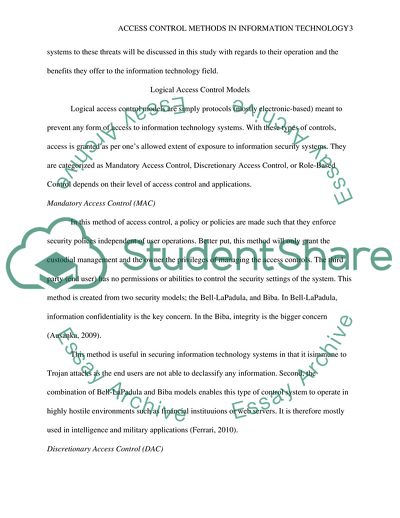Cite this document
(Access Control Methods in Information Security Coursework Example | Topics and Well Written Essays - 1500 words, n.d.)
Access Control Methods in Information Security Coursework Example | Topics and Well Written Essays - 1500 words. https://studentshare.org/information-technology/1859552-access-control-methods-in-information-security
Access Control Methods in Information Security Coursework Example | Topics and Well Written Essays - 1500 words. https://studentshare.org/information-technology/1859552-access-control-methods-in-information-security
(Access Control Methods in Information Security Coursework Example | Topics and Well Written Essays - 1500 Words)
Access Control Methods in Information Security Coursework Example | Topics and Well Written Essays - 1500 Words. https://studentshare.org/information-technology/1859552-access-control-methods-in-information-security.
Access Control Methods in Information Security Coursework Example | Topics and Well Written Essays - 1500 Words. https://studentshare.org/information-technology/1859552-access-control-methods-in-information-security.
“Access Control Methods in Information Security Coursework Example | Topics and Well Written Essays - 1500 Words”. https://studentshare.org/information-technology/1859552-access-control-methods-in-information-security.


